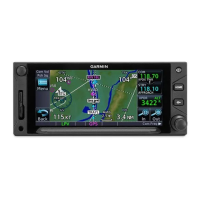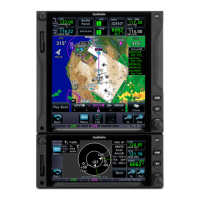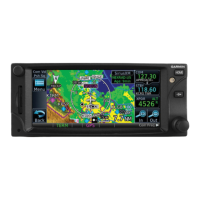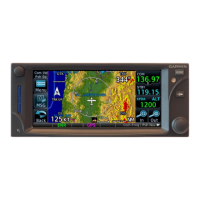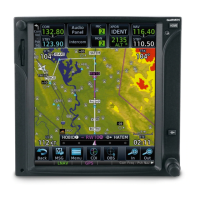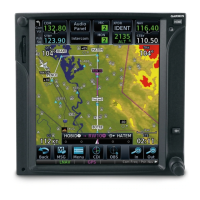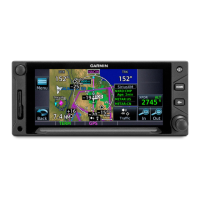11GTN 650: ADDING DEPARTURES, ARRIVALS, AND APPROACHES
ing the sequence of waypoints in the procedure, you must proceed direct-to another waypoint, or activate
another leg, within the procedure as appropriate for your clearance.
Delete a departure procedure from the active flight plan
1. On the Active Flight Plan page, TOUCH the procedure name.
2. TOUCH Remove Departure in the Departure Options.
3. Conrm your choice and TOUCH OK.
e GTN navigation database includes conventional and RNAV arrivals. To add a STAR to a ight plan, the
destination airport must be the last waypoint in the ight plan.
Add an arrival procedure to the active flight plan
1. On the Active Flight Plan page, TOUCH the destination airport.
2. TOUCH Load PROC in Waypoint Options.
3. TOUCH Arrival.
4. In the Select Arrival window, TOUCH the name of the desired arrival. If necessary, TOUCH the Up and
Down arrows to view the entire list of arrivals.
5. If the arrival has multiple entry points, TOUCH the waypoint in the Select Transition window that
marks the beginning of the arrival according to your clearance. If your clearance does not include one of
the charted transitions and you will join the arrival at another x along the arrival or a leg between two
xes, TOUCH the charted transition best aligned with your current route.
6. If the arrival serves more than one runway, in the Select Runway window, TOUCH the runway in use at
the destination airport.
7. e PROC–Arrival page appears so that you can preview the arrival and conrm your choices. To add
the arrival to the ight plan, TOUCH Load Arrival.
8. e Active Flight Plan page appears. e arrival name and the waypoints that comprise the procedure
appear above the destination airport. If the procedure includes altitude constraints in the navigation
database, the constraints appear next to the corresponding waypoints.
Delete an arrival procedure
1. On the Active Flight Plan page, TOUCH the procedure name.
2. TOUCH Remove Arrival in Arrival Options.
3. Conrm your choice and TOUCH OK.
Loading and Activating Approaches
e basic steps for ying dierent types of approaches are the same
for both RNAV (GPS) and conventional (VLOC) approaches (e.g. ILS,
localizer, or VOR). e few key dierences are discussed later in this
manual.
It is rarely necessary to activate an approach. Once an approach is
loaded, proceeding direct-to a waypoint within the approach, or acti-
vating a leg between two xes in the approach, activates the approach
automatically. Explicitly activating an approach is identical to activat-
ing direct-to the rst waypoint of the approach in the ight plan.
If ATC is vectoring you to join the approach, you should not y
direct-to the transition waypoint unless or until ATC clears you di-
rect-to a specic waypoint. ATC also may vector you to join a leg be-
tween two waypoints within the approach.
TIP
Selecting “Vectors” or “Vec-
tors-to-final” (VTF) for an instrument
approach is not recommended
most of the time. VTF may prevent
approach waypoints outside of
the FAF from being loaded into
the flight plan. ATC can clear an
RNAV-capable aircraft direct-to
an IF/IAF, even on a conventional
approach, such as an ILS. If you se-
lect VTF as the transition for an ap-
proach, you may be unprepared if
ATC issues such a clearance.
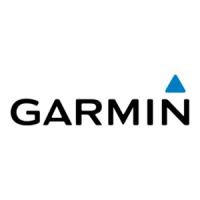
